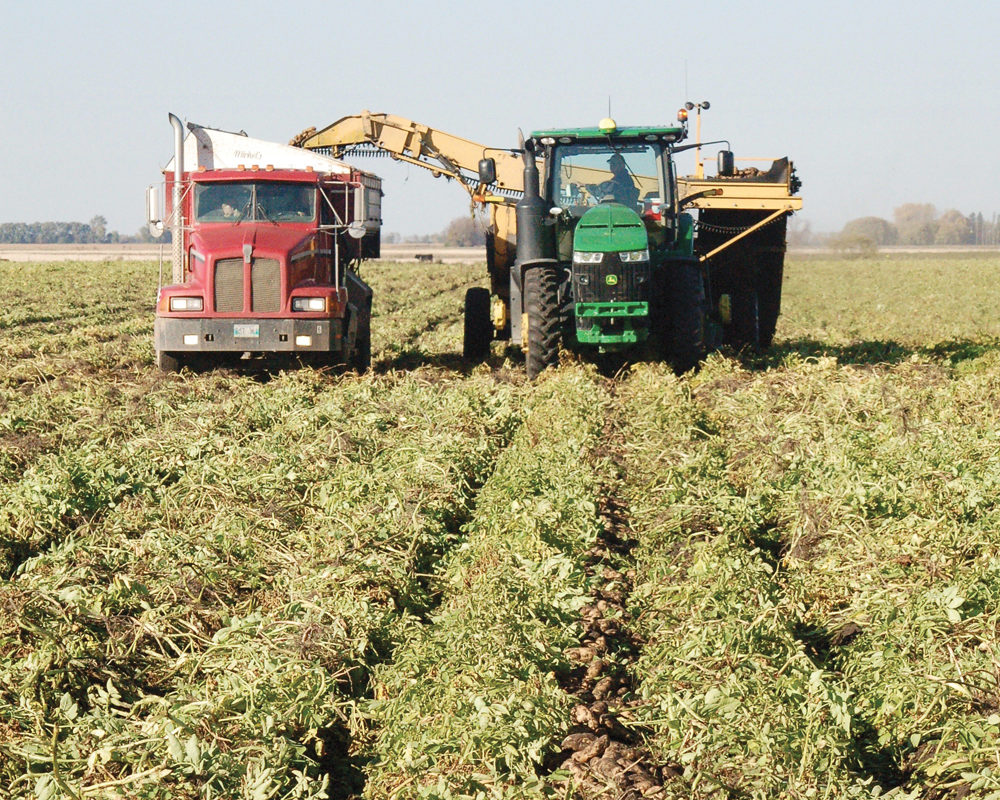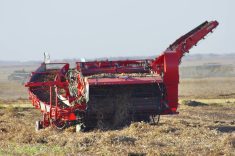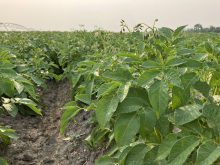Many Manitoba potato growers faced nail-biting times this autumn as they struggled to get the crop off.
In the end, however, yields are expected to be similar to last year.
Dave Sawatzky, manager of Keystone Potato Producers Association, said he predicts yields will roughly be on par or slightly better than 2016’s harvest, when Manitoba potato growers brought in 348 hundredweight per acre on average.
“Overall, it looks like a pretty good crop. A very challenging crop, this year, to grow — very dry summers, so irrigation was run hard,” he said.
Read Also

Manitoba sclerotinia picture mixed for 2025
Variations in weather and crop development in this year’s Manitoba canola fields make blanket sclerotinia outlooks hard to pin down
He added that harvest conditions proved especially difficult when rain fell in mid- to late September, which delayed harvest, pushing many producers past the traditional completion date of Oct. 1.
“We start gambling with frost after that date. So, there was a lot of risk or nervousness, I guess, here in the province.”
But with October, farmers’ luck changed. Better weather enabled most to get their potatoes in by Oct. 7 or 8, he said.
Seeded area was down from a year ago, at 62,500 acres, compared to 65,000 in 2016. Contracted acres were reduced to better match supply needs of french fry processors McCain Foods in Portage la Prairie and Carberry, and J.R. Simplot in Portage la Prairie.
This year’s long, strange road to harvest gave producers cause for concern right from the start. The large set early in the season, where there are more tubers than normal under each plant, sparked worries that the tubers would not reach an acceptable size.
Then heat came at the end of August and early September, which may have reduced tuber “bulking” and trimmed yields back a bit, said Sawatzky. He added that heat also delayed harvest as producers waited for cooler weather to arrive, not wanting to put warm tubers into storage because they don’t keep well under those conditions.
In the end, most potatoes gained acceptable size, although there are some size issues with one variety, Umatilla Russet, in one area of the province.
In recent years, potato yields have generally been increasing, a trend Sawatzky attributes to several factors.
He said one variety, Innovator, has enabled producers in the Portage la Prairie region to achieve higher yields, although markets for it are limited due to its slightly yellow colour. McCain holds the rights to Innovator.
Other reasons for increasing yields are better management practices as growers fine-tune their irrigation systems. All processing potatoes in Manitoba are grown with irrigation.
Row spacing has also contributed, as many growers now seed on 34-inch row spacing and use more seed per acre, compared to the 38-inch spacings and then 36-inch spacings used a few years ago.
Based on data from Keystone Potato Producers, Manitoba’s potato harvest for the past six years is as follows:
- 2011 240 cwt per acre;
- 2012 276 cwt per acre;
- 2013 310 cwt per acre;
- 2014 306 cwt per acre;
- 2015 322 cwt per acre;
- 2016 348 cwt per acre.



















